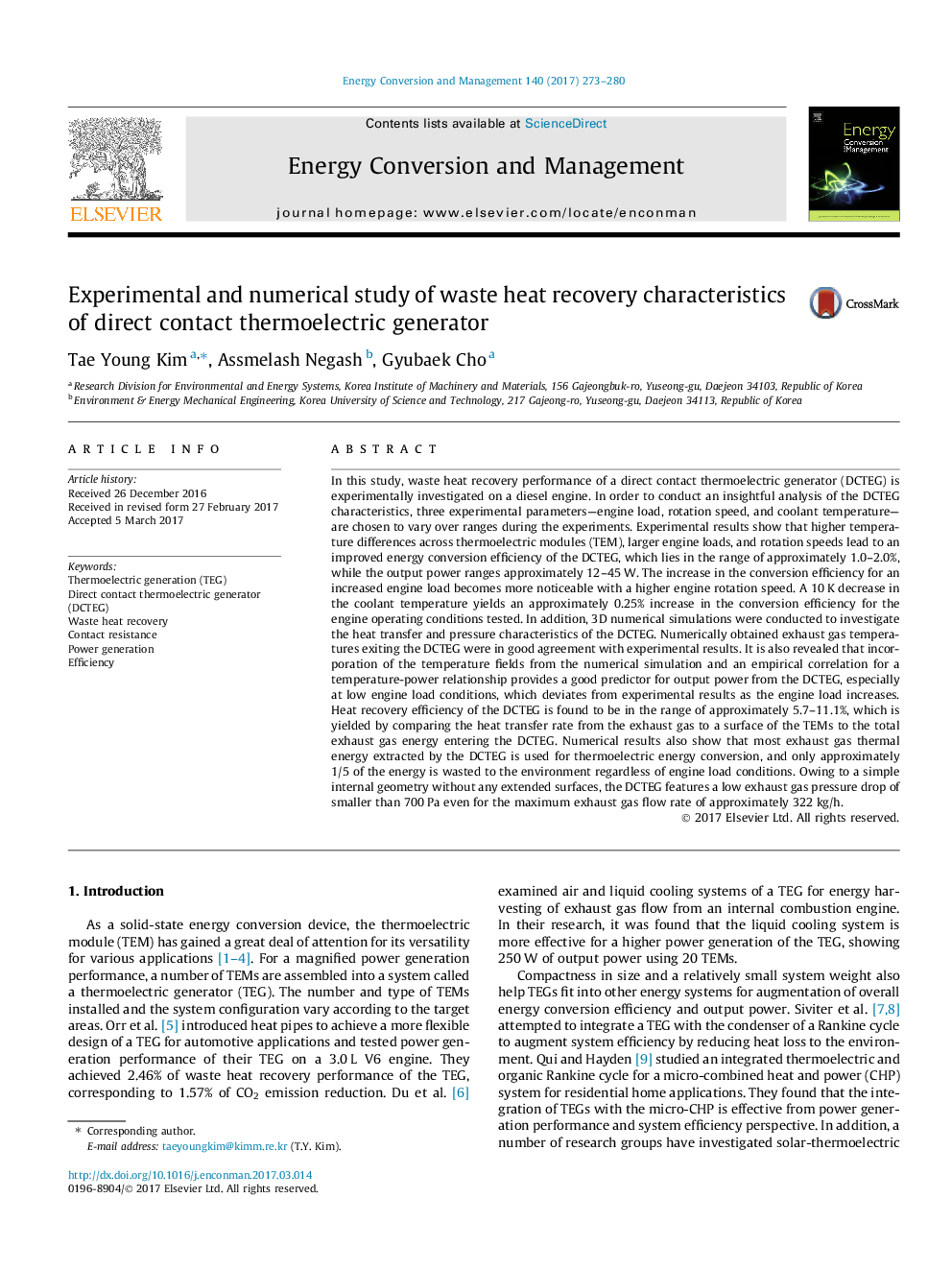| کد مقاله | کد نشریه | سال انتشار | مقاله انگلیسی | نسخه تمام متن |
|---|---|---|---|---|
| 5012859 | 1462822 | 2017 | 8 صفحه PDF | دانلود رایگان |
عنوان انگلیسی مقاله ISI
Experimental and numerical study of waste heat recovery characteristics of direct contact thermoelectric generator
ترجمه فارسی عنوان
بررسی تجربی و عددی از ویژگی های بازیابی حرارت ذرات مولد ترموالکتریک تماس مستقیم
دانلود مقاله + سفارش ترجمه
دانلود مقاله ISI انگلیسی
رایگان برای ایرانیان
کلمات کلیدی
موضوعات مرتبط
مهندسی و علوم پایه
مهندسی انرژی
انرژی (عمومی)
چکیده انگلیسی
In this study, waste heat recovery performance of a direct contact thermoelectric generator (DCTEG) is experimentally investigated on a diesel engine. In order to conduct an insightful analysis of the DCTEG characteristics, three experimental parameters-engine load, rotation speed, and coolant temperature-are chosen to vary over ranges during the experiments. Experimental results show that higher temperature differences across thermoelectric modules (TEM), larger engine loads, and rotation speeds lead to an improved energy conversion efficiency of the DCTEG, which lies in the range of approximately 1.0-2.0%, while the output power ranges approximately 12-45Â W. The increase in the conversion efficiency for an increased engine load becomes more noticeable with a higher engine rotation speed. A 10Â K decrease in the coolant temperature yields an approximately 0.25% increase in the conversion efficiency for the engine operating conditions tested. In addition, 3D numerical simulations were conducted to investigate the heat transfer and pressure characteristics of the DCTEG. Numerically obtained exhaust gas temperatures exiting the DCTEG were in good agreement with experimental results. It is also revealed that incorporation of the temperature fields from the numerical simulation and an empirical correlation for a temperature-power relationship provides a good predictor for output power from the DCTEG, especially at low engine load conditions, which deviates from experimental results as the engine load increases. Heat recovery efficiency of the DCTEG is found to be in the range of approximately 5.7-11.1%, which is yielded by comparing the heat transfer rate from the exhaust gas to a surface of the TEMs to the total exhaust gas energy entering the DCTEG. Numerical results also show that most exhaust gas thermal energy extracted by the DCTEG is used for thermoelectric energy conversion, and only approximately 1/5 of the energy is wasted to the environment regardless of engine load conditions. Owing to a simple internal geometry without any extended surfaces, the DCTEG features a low exhaust gas pressure drop of smaller than 700Â Pa even for the maximum exhaust gas flow rate of approximately 322Â kg/h.
ناشر
Database: Elsevier - ScienceDirect (ساینس دایرکت)
Journal: Energy Conversion and Management - Volume 140, 15 May 2017, Pages 273-280
Journal: Energy Conversion and Management - Volume 140, 15 May 2017, Pages 273-280
نویسندگان
Tae Young Kim, Assmelash Negash, Gyubaek Cho,
